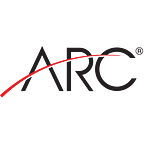3 Technology Trends In Facilities Management You Should Investigate For 2022
Technology has significantly impacted the facilities management services in recent years. Here are technology trends for building management in 2022
Internet Of Things (IoT)
BIM (Building Information Management)
Drone Technology……….read to know more.
Technology Trends In Facilities Management
Even though we aren’t driving flying vehicles, technology has significantly impacted the facilities management sector in recent years. Facilities managers are getting more and better data thanks to new technologies, applications, and computers, allowing them to maintain and operate their facilities more safely and cost-effectively.
Though advancements like artificial intelligence (AI) and robotics often make headlines, the buzz around emerging technology also precedes whether it is realistic for facilities teams to use in work. It may be difficult for facility managers to determine which technologies they can invest in and which they should wait to see.
Choosing which technologies to concentrate on can be difficult, which is why we are here to assist you. We’ve looked at the three most important developments that could transform how buildings are managed and run in 2022.
Trend 1: Internet Of Things (IoT) And Smart Devices In Facilities Continue To Grow
IoT and smart gadgets have been around for a long time, with a toaster being the first wired device in 1990. The toaster’s first message was “I should have been born a Ferrari,” which is impressive when you come to know of it.
Since perfecting the toasting technique, IoT and smart devices have come a long way. These instruments are now used in nearly every sector worldwide, supplying consumers with previously unattainable volumes of data.
The cost of purchasing and implementing IoT sensors decreases, but the capacity of software to incorporate and consume data from these sensors is possibly the most significant factor in its development. If you’ve already invested in IoT and smart technology, 2022 is an excellent time to assess how well they’re doing. Are you on track to fulfil your IoT objectives and see a return on your investment? What other facility control functions could sensors aid in making you more powerful and lean?
Don’t worry if you haven’t yet been on the IoT bandwagon. This year is an excellent time to begin investigating what IoT and smart technology can do with your facilities management system. Installing them for energy efficiency is a positive first step. These emerging data points will not only help satisfy executive leadership’s and government regulators’ efficiency and green initiatives, but they will also help slash electricity prices by pinpointing where energy consumption occurs.
Trend #2: Bim (Building Information Management) Has Reached The Tipping Point.
BIM technology has become the industry standard in manufacturing, but it has yet to catch on in facilities management. The most common formats for floor plans used by facilities teams are paper, PDF, and CAD.
This is expected to improve in 2022 and beyond as we approach the BIM acceptance tipping point. While it used to be prohibitively expensive to convert nearly an entire portfolio of floor plans to BIM, as facilities teams collect more and more BIM files on new or upgraded houses, this financial barrier is cracking. When you get around to getting BIM files for half of your houses, it makes a lot more sense to convert your old paper and PDF files.
It is more critical than ever for facilities managers to begin weighing the advantages of BIM archives. BIM is a software technology that provides intelligence and real-time data to inform how buildings are built and operated. Whereas CAD is a reproduction of manual sketches that takes a lot of time and work to keep precise, BIM can do it more precisely and in a fraction of the time. A hand painting, for example, cannot tell you how big a room is. This is something that BIM does right out of the box, helping facilities departments to manage and run their buildings more efficiently.
Although this may seem complicated and far-fetched, the best facilities management software is already taking advantage of this technology.
Trend #3: Drone Technology Gets Off The Ground
Roof maintenance is the most common use case for drones. No one enjoys climbing up on the roof to finish the review or assess specific rooftop units’ state — drones free facilities management teams from this time-consuming and potentially risky task. In a fraction of the time, teams may obtain high-quality images of building roofs, reducing the risk. From the protection and comfort of the field, this imagery can recognize possible problems and keep track of the general situation.
— — — — — — — — — — — — — — — — — — — — — — — — — -
Instantly Access and Share Facility Information
ARC Facilities delivers critical building information to facilities professionals using mobile devices instantly, no training required. A simple swipe and a few taps allow them to view building plans for routine maintenance and handle emergencies within seconds.
Facilities professionals use ARC Facilities to work smarter, save time, and keep costs under control.
Bring AI-powered technology to your facilities. Modernize your operations by equipping your team with the latest facility management software for digital document processing, AI, and machine learning.
When you start using the ARC Facilities platform, you unlock access to an expert onboarding team to get you up and running quickly. We handle digitizing your existing building information, and provide training and support to your team.
Explore the full product: https://www.arcfacilities.com/product
